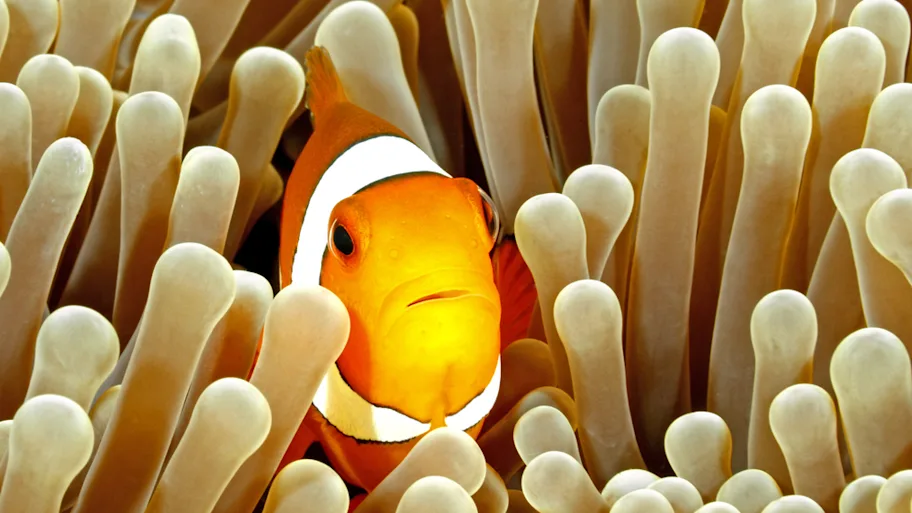
- Science News
- Frontiers news
- Anna Savage – The canary in the coal mine
Anna Savage – The canary in the coal mine
Author: Natasha Inskip
Dr Anna Savage is an Associate Professor of Biology at the University of Central Florida. She previously completed her PhD in Ecology and Evolutionary Biology at Cornell University and was a postdoctoral fellow at the Smithsonian Institution. Recently, Anna has taken on the role of Specialty Chief Editor within the Behavior, Evolution, and Ecology section of Frontiers in Amphibian and Reptile Science.
The United Nations Sustainable Development Goal 15 Life on Land is about aiming to protect, restore, and promote sustainable use of terrestrial ecosystems, sustainably manage forests, combat desertification, and halt and reverse land degradation and halt biodiversity loss. In this blog, we will explore how Anna’s important work contributes to this goal.

Photo credit: Erin Brosnan
Could you start by running us through your expertise and your main areas of research interest?
“My background is in evolutionary biology and I care a lot about conservation of amphibians. Most of us know that they're facing massive global declines and it's been a conservation issue that was first in the news when I was a kid in the 1990s. That was a motivator that drove me to become a scientist from the start.
“As I became more trained in the scientific disciplines during college, evolutionary biology made a lot of sense in terms of understanding mechanisms and coming up with practical solutions. If we're trying to figure out how we can create a situation where populations of organisms that are threatened are going to be able to recover and succeed on their own, it's all about what's going to happen in terms of their evolutionary change. Is it possible for them to simply evolve, adapt, and cope with any new threat, or not?
“By necessity I also had to become trained in immunology, because the threat that most amphibians are facing is disease and infectious pathogens. To really understand what matters in terms of evolutionary change, you've got to understand the immune system and what is encoded in the genome and how that translates to function. I have become much more interdisciplinary as a researcher than I ever planned to be because of this. For example, the main pathogen is a fungus, therefore I need to study disease ecology and understand fungal biology. Then, since frogs are vertebrates with complex immune systems, I need to understand how immunity works to make reasonable hypotheses about evolutionary genetic mechanisms of adaptation.”
How has your career developed so far?
“When I was applying to PhD programs, I was very fixated on the idea of looking at how genetic variation among frogs might help explain susceptibility to the fungal disease chytridiomycosis, which is a globally devastating disease caused by the chytrid fungus Batrachochytirum dendrobatidis. We figured out that this was the fungus causing global frog disease in the 1990s, but there were still a lot of open questions. Where did it come from? Why did it show up all of a sudden? Why are some amphibians susceptible and not others?
“Looking at which frogs and salamanders are susceptible, there's not a clear pattern that explains it. It seemed to be really all over the place and there would be some species that have gone extinct and then other closely related species that tolerate the fungus. I decided that if we wanted to understand what was driving differences in susceptibility, we needed to look at intermediate species where some, but not all, animals are susceptible, and try to hone in on the difference between those that are surviving and those that aren't. That started what has continued to be a main thread of my research program, which is looking at genetic variation, and trying to identify what parts of the genome are associated with higher survival, so that we can really try to figure out how much of susceptibility is due to genetics and which genetic variants matter the most.
“Now that I’ve confirmed the pattern in several frog species, I face a more complicated challenge of trying to understand the mechanism and exactly what’s going on with immune response. I've done some gene expression studies and so have several other research groups, and because the patterns are so complex, it leads us back to the realization that we don’t fundamentally know how amphibian and reptile immune systems work, not nearly as well as we understand those of mammals and birds. So that is where, as a herpetologist, I'm always pushing for more basic immunology applied to non-endothermic terrestrial vertebrates.
“As part of my interest in ectothermic adaptive immune systems, I’ve also been doing some work in other areas such as reptile infectious diseases with snake fungal disease and sea turtle disease with tumor disease fibropapillomatosis (FP). While they each have their differences, there are some commonalities in terms of the understanding needed to look at immune function and immune gene variation. This really highlights the importance of being interdisciplinary as a researcher and I’ve enjoyed the opportunity to work on different areas of focus and with professionals from various backgrounds.”
You mentioned that amphibians and reptiles are less studied and less is known about them than birds and mammals, in general. As they are particularly impacted by temperature shifts, would this make them good models for management techniques and decisions following the aims outlined by Sustainable Development Goal 15?
“For a long time, we've called amphibians ‘the canary in the coal mine,’ because they tend to be good indicators of what's going on in the environment due to their amphibious lifestyle and permeable skin. I would extend this idea more broadly to both amphibians and reptiles as ectothermic organisms that depend on environmental temperatures to function. In an era of climate change, they are ideal organisms to track the consequences of any shifts in environmental temperatures.
“I myself do not focus on climate change as a major angle of my research, in part because it's a challenging thing to tackle. However, it is certainly adjacent and very relevant in terms of why I'm studying the organisms that I'm studying. We need to better understand how vertebrate organisms interact with their environments and how that dictates things like disease susceptibility, evolutionary trajectories, and how it might be really different for ectotherms compared to what's going on in mammals and birds.
“Another big thing that I really push for in my research, and in science in general, is model systems. We have model organisms of each taxonomic group, and they allow us to get real answers at a very mechanistic level. However, I think that we need to develop more of these systems, including full model systems, as well as developing better resources for asking more detailed questions in non-model species. For example, how does an organism physiologically cope with different climates and how does that impact their genomes? This is important to answer across many different amphibian and reptile species, because from what we know from the well-studied mammal and bird systems is that when you compare just a handful of model organisms, they can be extremely different in their function, even if they're closely related.
“Currently we have over 8,000 described species of amphibians and we're up to over 11,000 species of non-avian reptiles. This accounts for over 50% of tetrapods, but this large chunk of biodiversity has very few model systems. Their genetic and immunological variation is very understudied, so we are missing key information about questions such as how terrestrial ectotherms deal with climate change.”
Your work is clearly very relevant to Sustainable Development Goal 15 and part of that includes a focus on protecting the biodiversity of our life on land. How would you describe the importance of the link between evolutionary understanding and conservation?
“My perspective on conserving biodiversity is that the scope of the problem is too big for human intervention to actually effectively conserve biodiversity. We can have species maintained in zoos and facilities, but that's not going to cover the vast majority of biodiversity. So fundamentally understanding the scenarios where evolutionary processes can lead natural populations to adapt and cope with a challenge is key to making these broader decisions about priority areas to target for interventions.
“The blanket conservation recommendation I will always offer is that we should do anything we can to preserve habitats and maintain or even grow populations. Genetic drift is always going to be a huge problem in small populations. We should preserve habitats in a more targeted way, by identifying which populations really are not going to make it, not only based on overall genetic diversity, but also specific measurements of functionally important variation. We can then think about targeted interventions such as captive breeding or even gene editing, which I know can be controversial. However, there are benefits to using it as a conservation tool where we can actually help the evolutionary process by introducing functionally important variation.
“If we know which variants are actually beneficial for dealing with a major threat like climate change or disease, we can do things to try to enhance those variants and increase their frequency. We can let evolution do its job. Throughout my research career, I continue to build more evidence about what variation is going to allow individuals to survive, and then what are the ecological conditions that are going to allow it to actually allow populations to persist.”
As an accomplished researcher in your field, what would you consider to be your proudest professional accomplishment?
“When I started studying amphibian disease, my ideas were often dismissed as too speculative with no evidence, but I felt that individual level genetic variation had to matter for disease susceptibility based on other animal systems. The nature of the earlier studies that had been done on amphibian disease did find very broad patterns where species were either totally susceptible or totally resistant, but there wasn't a lot of good data out there showing the in between.
“I was discouraged repeatedly by most potential research mentors because there was no evidence that genetic variation was going to matter at this scale, and so it was risky to base your academic success on that. I'm proud of the fact that I stuck with it. To me, this wasn’t done naively because it was based on core scientific principles of disease biology, epidemiology, genetics, and evolution. Essentially, it's a good bet that there is going to be natural heritable variation for resistance to any pathogen, even if the majority of individuals get wiped out. It turned out that my idea about individual genetic variation predicting disease susceptibility was correct, and it has shifted the focus of amphibian disease studies where host genetics is now a significant component.
“Now that I'm at a mid-career stage and a tenured professor, something that I am the most proud of is being a scientific mentor. One challenge in academia that we’re addressing better now than we used to is that we're only trained to be scientists. We're not trained to manage a lab and mentor people. It's something that hopefully you pick up along the way, but it is a really fundamental component of being a principal investigator that we don’t learn how to do ahead of time. I don't think there is a perfect way to be a mentor, but the fact that I have been able to mentor students who have been successful in their own right and have advanced the research, is by far, the most rewarding thing to me.”
At present, less than 30% of researchers worldwide are women. Science and gender equality are essential to ensure sustainable development. As a successful woman in your field, do you have any advice for women who are now starting their career in science?
“While women are still underrepresented in science as a whole, they actually make up the majority of PhD students within the biology field. That being said, we do have the leaky pipeline problem where from the postdoc level and beyond women are in the minority. In herpetology, the pattern is more extreme than in other biology disciplines. It has definitely come a long way, and there are many more women in herpetology today compared to when I started in 2006, but it remains one of the biology disciplines where you see significantly fewer female authors.
“I strongly encourage women to be less deferential, and instead, be willing to speak up about their accomplishments. I encourage this in all of my students, but I think it is really important for women in science; you can't be afraid to promote your strengths. If you get an interview for a PhD position or job position, you've got to get up there and say what you have done that's amazing, and you have to be able to say that with confidence and not back down from it.
“When you start a PhD program, you've already been selected to be in an extremely competitive group of individuals. It's very easy to feel like everyone around you is smarter than you, works harder than you, does better work than you, and has more successes than you. I understand this ‘imposter syndrome’ because I'm not immune to it, but my advice for how to deal with it is to let yourself have those feelings and then don't let it stop you from going after what you want.
“If you are passionate about going into science, going into a certain discipline, having a certain type of career, then commit. Too many people take themselves out of the running before they're even in it. In my experience, the people who end up where they want to be are the ones who keep going for it.”


Frontiers is a signatory of the United Nations Publishers COMPACT. This interview has been published in support of and United Nations Sustainable Goal 5: Achieve gender equality and empower all women and girls and United Nations Sustainable Development Goal 15: Protect, restore and promote sustainable use of terrestrial ecosystems, sustainably manage forests, combat desertification, and halt and reverse land degradation and halt biodiversity loss.






